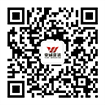

元器件交易网讯 5月29日消息,据外媒报道,三星周三为可穿戴技术勾勒未来,并描绘出使用手机应用、可穿戴设备及全新的可穿戴传感器收集健康数据的情景。三星并没有推出任何新的消费类产品,但明确了一件事:三星将大张旗鼓的为健康和健身技术领域投资。
三星已经建立了两个平台:三星Simband设备及三星SAMI云服务。
Simband是一款尚不出售的健康腕带,可以连接到三星的SAMI云平台,以供三星及其合作伙伴收集、分析这些健康数据。
Simband拥有光学及声学传感器,可有效收集佩戴者的心率、体温等其他数据,同时还有包括加速度传感器、陀螺仪等在内的标准传感器。
目前Simband商用化时间尚不清晰,何时现有设备可以使用SAMI平台也无定论。三星表示将举办一场开发者大赛并提供5000万美元奖金,主题是SAMI的构建。(元器件交易网毛毛 摘译)
以下为原文:
Samsung laid out its vision for the futureof wearable technology on Wednesday, outlining a scenario where it collectshealth data using phone apps, wearable devices and new wearable sensors. WhileSamsung didn’t announce any new consumer products, it did make one thing clear:It plans to invest in health and fitness technology in a major way.
“There is a tremendous opportunity at the intersection of health andtechnology,” said Young Sohn, president and chief strategy officer for SamsungElectronics’ Device Solutions. “This is the single greatest opportunity of ourgeneration.” Sohn said that
As Samsung sees it, it won’t be pushing itstake on the future of health tech on its own. “We want to bring the best talentfrom outside,” Sohn said at a San Francisco press event. “This is a big enoughchallenge—we cannot do it alone, we have to do it with partners.”
Still, Samsung wants to be in the driver’sseat, proposing others join its platform for sensor and wearable development.Samsung has created two platforms—the Samsung Simband device and the SamsungArchitecture Multimodal Interactions (SAMI) cloud service.
The Simband is an “investigational” fitnessband, not for sale, that Samsung’s Silicon Valley labs have been developing inconcert with health startups and researchers from IMEC, a Belgian biotechnologyresearch center, and the University of California San Francisco. It connects toSAMI, a cloud platform where Samsung and its partners can store and analyze thehealth data it collects.
The Simband uses optical and acousticsensors to effectively listen to a wearer’s pulse to gather heart rate data,body temperature and other diagnostics, as well as more standard sensors suchas accelerometers and gyroscopes. Simband also can be charged while a user iswearing it using a “shuttle battery”—a battery pack that can be charged upduring the day and snapped onto the band for charging over night.
Ram Fish, vice president of digital healthat Samsung Electronics, demos the prototype Simband smartwatch. NathanOlivarez-Giles/The Wall Street Journal
Both the Simband and SAMI are being builtas modular platforms, and development will be open, Sohn said. The vision is tobe compatible with apps and devices made by other companies—not the creation ofa closed ecosystem, he said.
“Just like your money would be in a bank, where the bank holds yourmoney but doesn’t own your money, your health data is your personal data,” Sohnsaid. Samsung stressed that the effort is in early stages and there are challengesaround building more capable and accurate seniors, power consumption,miniaturization and privacy and security.
“Power consumption is critical, people don’t want to have to changebatteries every day,” Sohn said, promising that Samsung is working on wearablesthat wouldn’t have to be removed as often as current fitness bands andsmartwatches. Sohn argues that advanced wearable sensors are the next logicalstep from smartphone apps and fitness bands.
Luc Julia, a Samsung vice president ofinnovation, said that SAMI APIs will be made available to developers by the endof the year, and that the APIs will be open for any company to access and buildcompatible apps.
“In the end it’s all about data,” Julia said. “SAMI is a data brokerthat makes it easy to collect any kind of data—it’s agnostic. Even data comingfrom devices and sensors we don’t know anything about today.” Currently, oursmartphones and fitness bands capture very simple data in separate own silos.The point of SAMI is to get everyone on the same page so health data can becollected along with all other sorts of data that phones and wearables collect,in the same single repository, Julia said.
It’s unclear how quickly Samsung wants tobring the modular hardware ideas into its actual products, or how soon existingor future products could work with SAMI. But the company does already havemultiple smartwatches on the market—some with a focus on functioning as awrist-worn phone and other that are dedicated to fitness—with more watchesplanned. Samsung said it will host a developer challenge with $50 million setaside to fund SAMI-compatible product ideas, and that more details on itsvision will come later this year in its own developer conference, to be held inSan Francisco.
Samsung’s Wednesday announcement can beseen as a preemptive move against AppleAAPL -0.26%, which is expected toannounce a new iOS fitness tracking app called Healthbook at the iPhone maker’sWorldwide Developer Conference next week. Healthbook would reportedly serve as oneplace where all sorts of health data could be collected from various other appsand the iPhone itself. FacebookFB +0.05% too is investing in the health andfitness space. In April, the world’s largest social network purchased Moves, alocation and fitness tracking app, for an undisclosed price.
Many Japanese technology firms have alsoramped up their investments in medical businesses as they pursue new growthdrivers to fill the gap left by declining sales of consumer electronicsproducts. Toshiba Corp.6502.TO +2.00% and Hitachi Ltd.6501.TO -0.58% are bothactively looking for acquisition targets and will aim to double their revenuefrom the health-care segment over the next few years. Even Nintendo Co.7974.TO-0.51% has said it will broaden its core business beyond games into healthcare
关注我们

公众号:china_tp
微信名称:亚威资讯
显示行业顶级新媒体
扫一扫即可关注我们